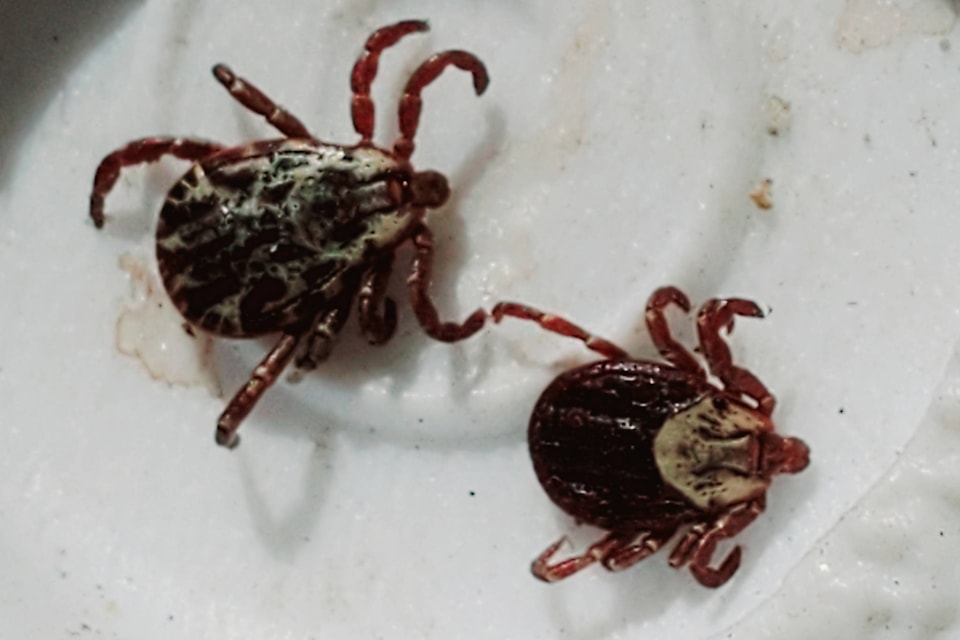By Rosie Wijenberg, WildSafeBC community co-ordinator
Spring has arrived in the Kootenays and with it have appeared some of our least favourite wild neighbours - ticks. In response to this annual emergence, WildSafeBC has some advice on how to avoid tick bites and what do if you are bitten by one of them. The unpopular eight-legged hitchhikers crawl out with the snow melt and can remain active into the early summer. Ticks are ectoparasites and survive and reproduce by embedding in and feeding on hosts such as deer, rodents and… us. Come spring ticks climb up to the tips of grasses and brush waiting for a host to latch onto. So, it is important to be vigilant as we get out to enjoy the nice weather.
Part of the eww factor with ticks is that they are vectors for disease. Here in the Kootenays, the most common human-biting tick is the Rocky Mountain wood tick. The toxin in the saliva of wood ticks can cause tick paralysis. If the tick is not removed, it can be fatal. But if ticks are removed early, the paralysis can be reversed without further symptoms. These ticks are also known to cause Rocky Mountain spotted fever, which is thankfully a rare occurrence in B.C.
The western black-legged tick is also found in B.C., primarily on the coast and west of Boston Bar and Yale. These ticks can carry the bacteria causing Lyme disease. Within B.C. tick populations, the incidence of Lyme-causing bacteria is thought to be less than one per cent. So if someone is bitten, the chance of contracting Lyme is low.
While a bite from a tick does not necessarily mean you will become ill, it is still important to take precautions to avoid getting bitten altogether.
• Avoid areas where you know there are ticks
• Walk on trails and avoid grassy, forested areas
• Be especially wary along game trails or open grassy areas.
• Wearing light coloured clothing will help you see ticks
• Tuck your pants into your socks or wear gators
• Apply insect repellent that contains DEET
• Talk to your vet about ensuring your pets are treated with tick preventatives
Most importantly, when returning from a hike, check yourself, children, and pets for ticks. Ticks will climb up your body and may be found in your hairline, scalp, folds of skin, and under your armpits or knees.
You can also help keep ticks out of your yard by managing wildlife attractants around your residence, such as bird feeders and garbage. They generally do not travel far on their own, but their hosts can bring ticks to you. Deer and small mammals, such as rodents, are great vessels for ticks. Best practices include removing or protecting plants that attract deer, removing hiding spots for small rodents, cutting down tall grass, and managing fruits and other attractive sources of food.
It is important to know what to do if a tick latches onto you. If you find a tick has latched on, use tweezers to pull up gently as close to the head as possible. Do not squeeze the tick and do not twist. It is important to remove the mouth parts. Wash the area with soap and water and disinfect the wound with antiseptic cream. If the tick is not removed promptly and buries itself more deeply, you may need to see a doctor to make sure the mouth parts are removed. Your doctor can then submit the tick for testing to the BC Centre for Disease Control.
For more information on local wildlife, visit www.wildsafebc.com.
